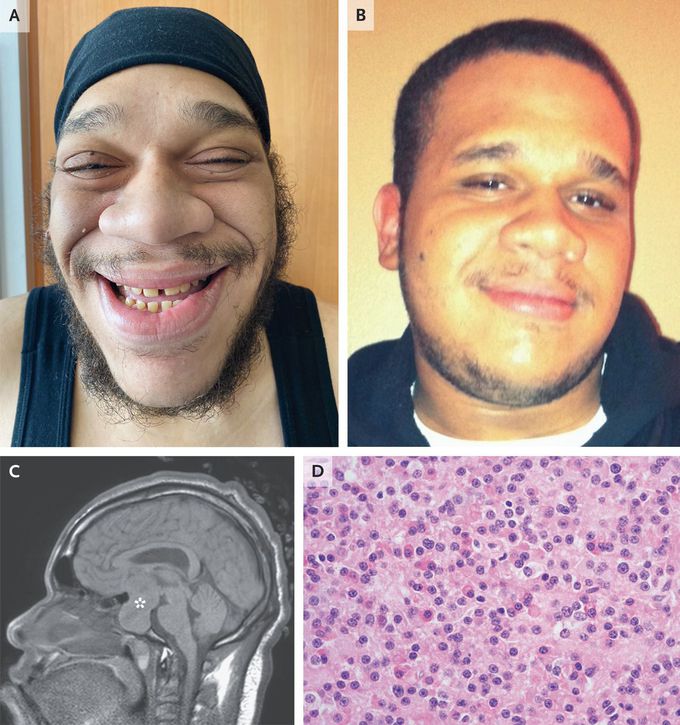


Acromegaly
A 34-year-old man who had been admitted to the hospital with diabetic ketoacidosis was noted to have coarse facial features. He had no known medical history but had noted an increase in shoe size by three full sizes over the past 10 years and blurry vision for the past 3 years. Physical examination showed a widened nose, frontal bossing, prominent lower jaw, and malocclusion of the upper incisors (Panel A), findings not seen in a photograph taken 15 years earlier (Panel B). Visual-field testing showed bitemporal hemianopsia. Laboratory studies showed a glycated hemoglobin level of 12.3% (reference range, 5 to 14), an insulin-like growth factor 1 (IGF-1) level of 478 ng per milliliter (reference range, 53 to 331), and a growth hormone level of more than 65 ng per milliliter (reference value, ≤7.1). A diagnosis of acromegaly was made. Magnetic resonance imaging of the head revealed a pituitary macroadenoma measuring 6.0 cm by 3.4 cm by 2.8 cm (Panel C, asterisk) and macroglossia. Transsphenoidal partial tumor resection was performed. Histopathological testing showed a somatotroph adenoma (Panel D, hematoxylin and eosin staining) that also stained positive for growth hormone. The patient was discharged with instructions to receive monthly octreotide to treat residual tumor and with medications for diabetes and hypertension. At 1 month of follow-up, the patient’s IGF-1 level had reduced, but the mass gradually reexpanded, which led to a second resection 8 months after the initial surgery.

